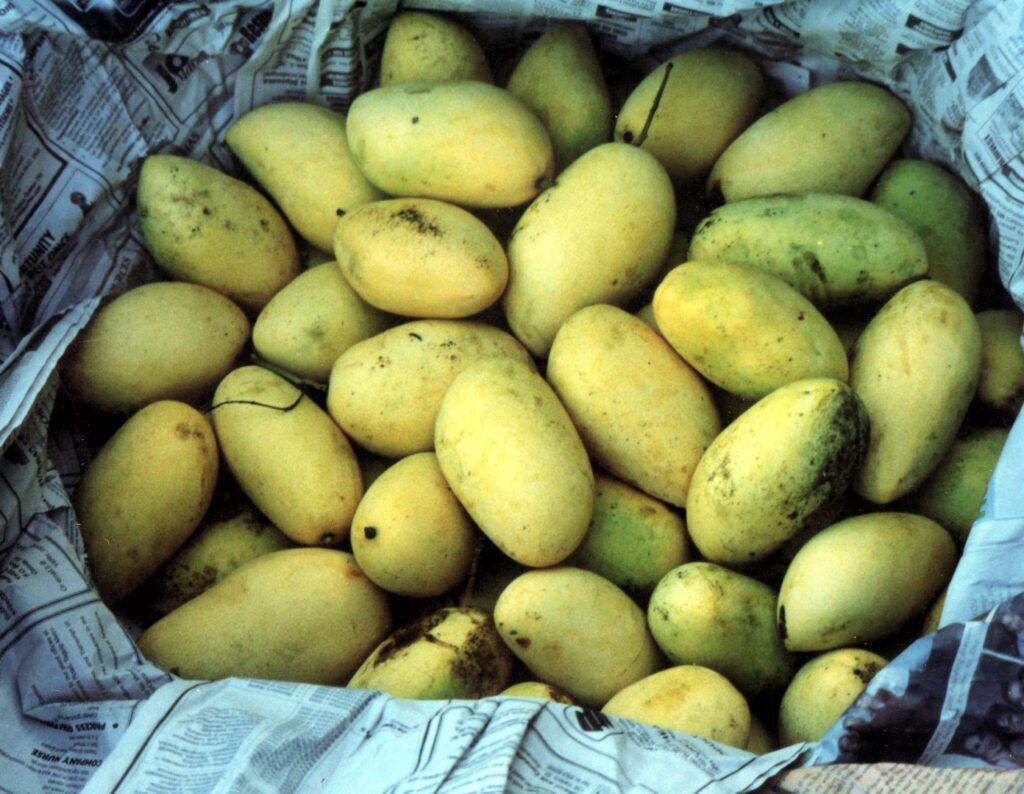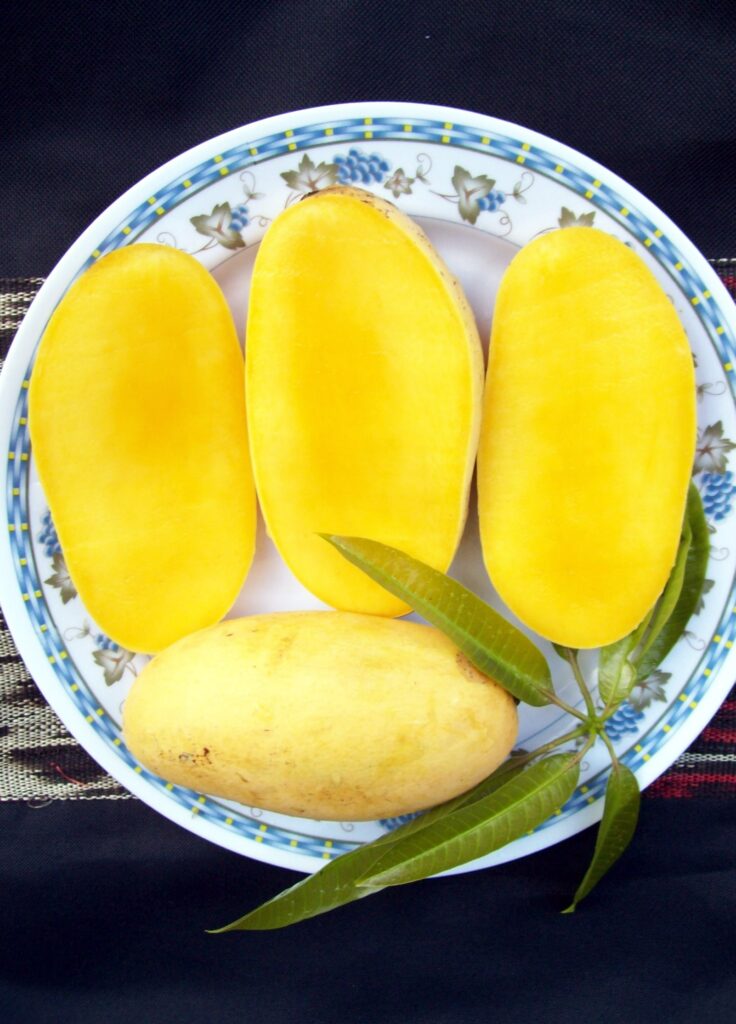Text and Photos by Henrylito D. Tacio
Many fruits grown in the Philippines are getting the thumbs up from nutritional researchers. Take the case of mango (scientific name: Mangifera indica), one of the country’s most celebrated fruits.
Recently, scientists at Texas A & M University have discovered that mango extracts can prevent, if not stop, the growth of breast and colon cancer cells. In an “unexpected and groundbreaking discovery,” they found mango extracts to have “some cancer-fighting ability when tested on lung, leukemia and prostate cancer cells.”
When tried on breast and colon cancers, the mango compounds were found to have even stronger anticancer abilities. “The mango extracts caused the breast and colon cancer cells to undergo apoptosis, or programmed cell death,” according to the university’s agri-life research department, which conducted the studies commissioned by the National Mango Board of Orlando, Florida.
The results of the studies – which were conducted by food scientists Dr. Susanne Talcott and her husband and co-researcher, Dr. Steve Talcott – were posted on the Philippine Cancer Society’s website.
But that’s only one reason why you should keep on eating mangoes. They contain essential nutrients like beta carotene and vitamin A. A study from the Institute of Nutritional Science at the University of Potsdam in Germany in 2003 found that infant mice whose diets were supplemented with beta carotene and vitamin A had higher levels of proteins that make up the immune system.

Eating foods rich in beta carotene may be a powerful weapon in the fight against heart disease. In one study in the United States, a large group of male doctors with heart trouble took 50 milligrams of beta carotene every other day. Compared with men who took nothing, they had almost half the number of heart attacks and strokes.
Vitamin A can also be found in such foods as carrots, sweet potatoes, liver, and eggs, but none is considered as healthy as fruits such as mangoes. “Mangoes are a safe source of vitamin A and beta carotene,” Ennata Avena, a research specialist in the food analytical service laboratory of the Food and Nutrition Research Institute, was quoted as saying by Reader’s Digest. As it ripens, the amount of beta carotene also increases.
But if you want to get more vitamin C, eat mangoes when they are green. Vitamin C, along with other vitamins found in fruits and vegetables, seems to protect people against cancers of the mouth, larynx, esophagus, stomach, colon, and breast. One study has shown that taking an extra 60 milligrams of vitamin C each day can help lower heart disease. Vitamin C has also been found to protect against declining mental ability and stroke.
“Mango has three times the vitamin C of a single orange or apple and important minerals essential to prevent cancer and other diseases,” hails Dr. Martin Hirte, a German health food researcher, and pediatrician.
The German physician also found that mango contains minerals that are vital for pregnant mothers and stressed-out people. “The calcium and magnesium of mango relaxes the muscles, relieves stress and prevents miscarriage,” Dr. Hirte wrote in his research paper entitled, The Benefits of Mango for Human Health.

But mangoes have several other medicinal uses. Julia F. Morton, the author of Fruits of Warm Climates, reports: “Dried mango flowers, containing 15% tannin, serve as astringents in cases of diarrhea, chronic dysentery, catarrh of the bladder and chronic urethritis resulting from gonorrhea.”
In India, the bark is employed against rheumatism and diphtheria. The resinous gum from the trunk is applied on cracks in the skin of the feet and scabies and is believed helpful in cases of syphilis.
According to Morton, in some of the Caribbean islands, the leaf decoction is taken as a remedy for diarrhea, fever, chest complaints, diabetes, hypertension, and other ills. A combined decoction of mango and other leaves is taken after childbirth.
Native to southern Asia, especially eastern India, Burma, and the Andaman Islands, the mango has been cultivated, praised, and even revered in its homeland since ancient times. Reference to mangoes as the “food of the gods” can be found in the Hindu Vedas. The leaves are ritually used for floral decorations at Hindu marriages and religious ceremonies.
Buddhist monks are believed to have taken the mango on voyages to Malaya and eastern Asia in the 4th and 5th centuries B.C. The Persians are said to have carried it to East Africa about the 10th century A.D. It was commonly grown in the East Indies before the earliest visits of the Portuguese, who apparently introduced it to West Africa early in the 16th century and also into Brazil.
History records showed that after becoming established in Brazil, the mango was carried to the West Indies, being first planted in Barbados about 1742 and later in the Dominican Republic. It reached Jamaica about 1782 and, early in the 19th century, reached Mexico from the Philippines and the West Indies.
Today, mango is the national fruit of the Philippines. Around the globe, the country is noted for “Manila Super Mango” because of its taste which until now is “still unmatched.” Former Agriculture Secretary Leonardo Q. Montemayor said the variety had found its way in the Guinness Book of World Records as “the sweetest of its kind in the world.”
“There’s nothing quite like it in the world,” explained an American who has tried mangoes from other countries. “Its sweet, juicy taste is so addictive, it’s the first thing I’d surely like to have when I come back.” He further stated, “Fresh mangoes from other countries are definitely cheaper compared to the Philippine mango especially those coming from Mexico , but why I would I settle for the second best? When it comes to mangoes, it should be only those coming from the Philippines .”
For sure, the Philippine mango is one of the country’s sources of pride. It is known for “its striking yellow peel and flesh, ambrosial scent, and most importantly, its distinctly sweet yet slightly tart flavor,” to quote the words of Trina Leah Mendoza of the Department of Science and Technology.
Ripe mangoes are eaten fresh as a dessert; or processed into dried mangoes, puree, juice, concentrate, shakes, and many more. When eaten green, they are a tasty treat for sour fruit lovers as they are usually dipped in salt, fermented fish, or shrimp (bagoong). Green mangoes are also pressed into juice and shakes.
Mango is also used to make juices, both in ripe and unripe form. Pieces of fruit can be mashed and used in ice cream or blended with milk and ice to make thick milkshakes. In Thailand and other Southeast Asian countries, sweet glutinous rice is flavored with coconut then served with sliced mango on top as a dessert.
As fruits are healthy foods, former health secretary Esperanza Cabral recommends eating them. “Fruits are healthy foods and we should be eating our recommended daily allowance of five to six servings of fruits,” she said. “There is every reason to eat mangoes along with other fruits because they are very healthy.”

